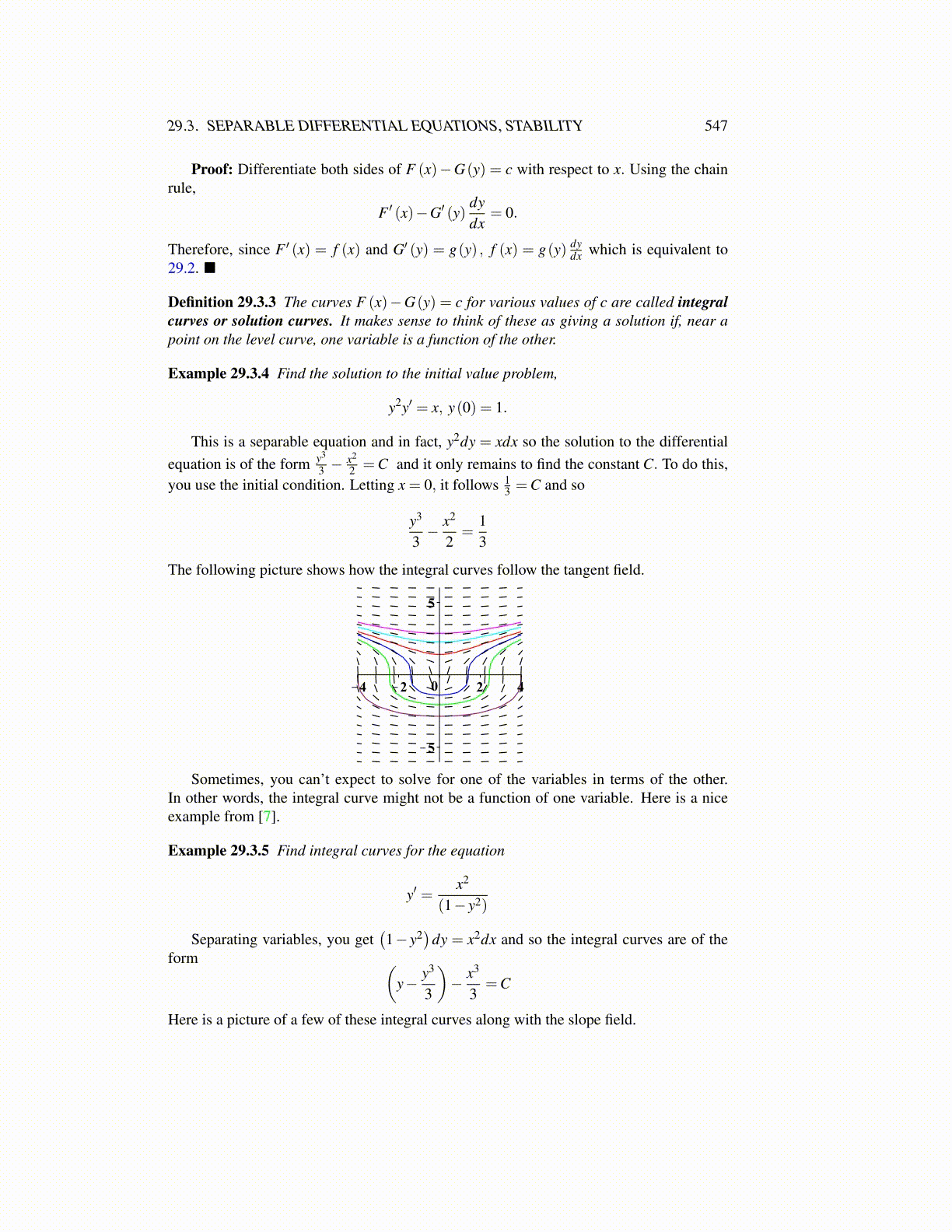
29.3. SEPARABLE DIFFERENTIAL EQUATIONS, STABILITY 547
Proof: Differentiate both sides of F (x)−G(y) = c with respect to x. Using the chainrule,
F ′ (x)−G′ (y)dydx
= 0.
Therefore, since F ′ (x) = f (x) and G′ (y) = g(y) , f (x) = g(y) dydx which is equivalent to
29.2. ■
Definition 29.3.3 The curves F (x)−G(y) = c for various values of c are called integralcurves or solution curves. It makes sense to think of these as giving a solution if, near apoint on the level curve, one variable is a function of the other.
Example 29.3.4 Find the solution to the initial value problem,
y2y′ = x, y(0) = 1.
This is a separable equation and in fact, y2dy = xdx so the solution to the differentialequation is of the form y3
3 −x2
2 =C and it only remains to find the constant C. To do this,you use the initial condition. Letting x = 0, it follows 1
3 =C and so
y3
3− x2
2=
13
The following picture shows how the integral curves follow the tangent field.
Sometimes, you can’t expect to solve for one of the variables in terms of the other.In other words, the integral curve might not be a function of one variable. Here is a niceexample from [7].
Example 29.3.5 Find integral curves for the equation
y′ =x2
(1− y2)
Separating variables, you get(1− y2
)dy = x2dx and so the integral curves are of the
form (y− y3
3
)− x3
3=C
Here is a picture of a few of these integral curves along with the slope field.